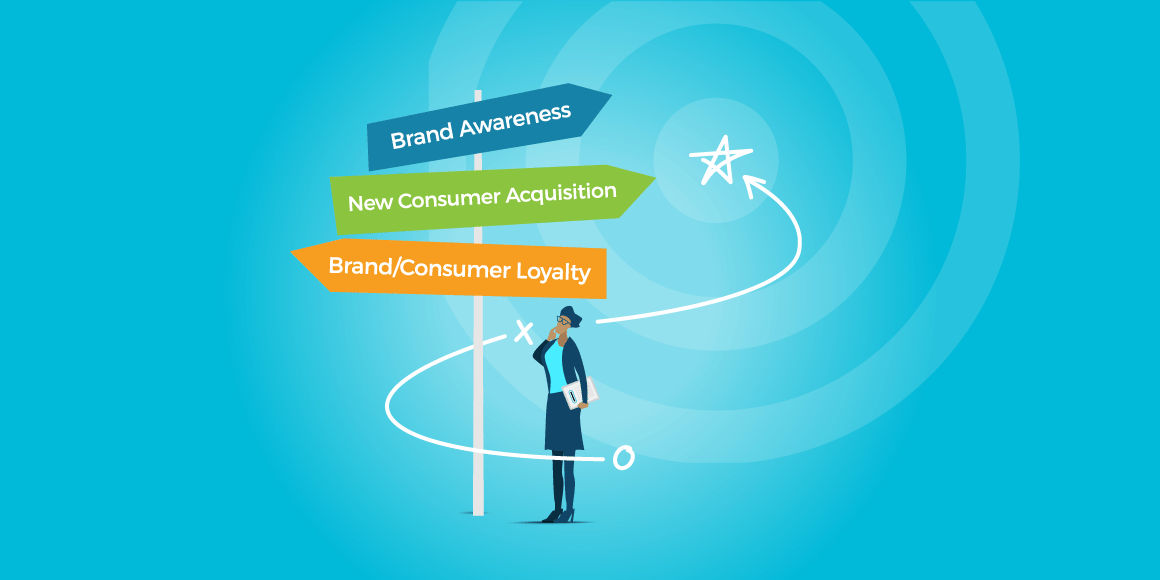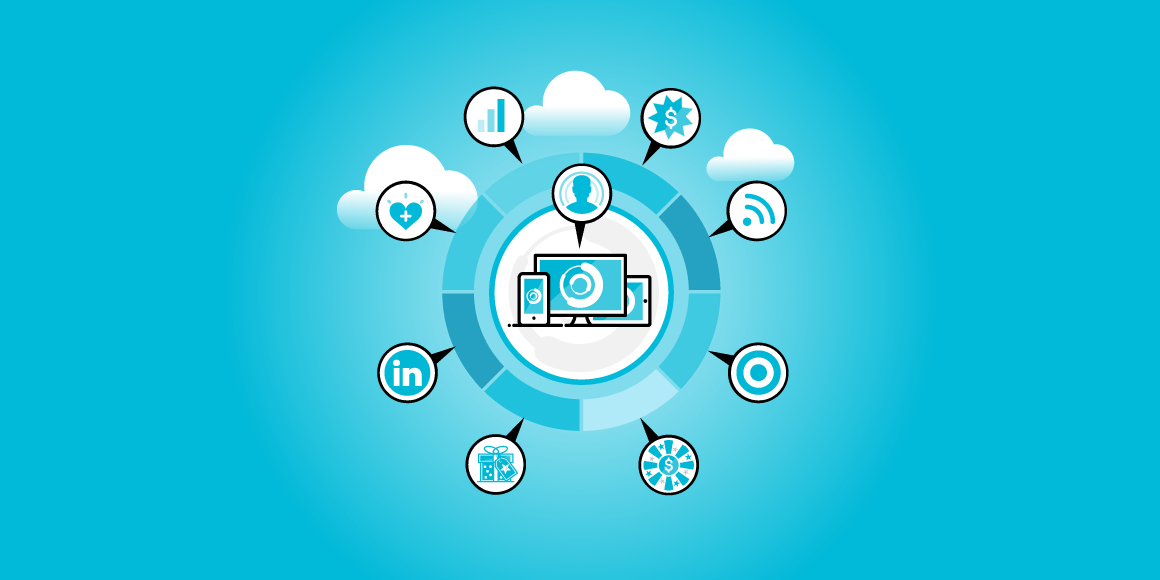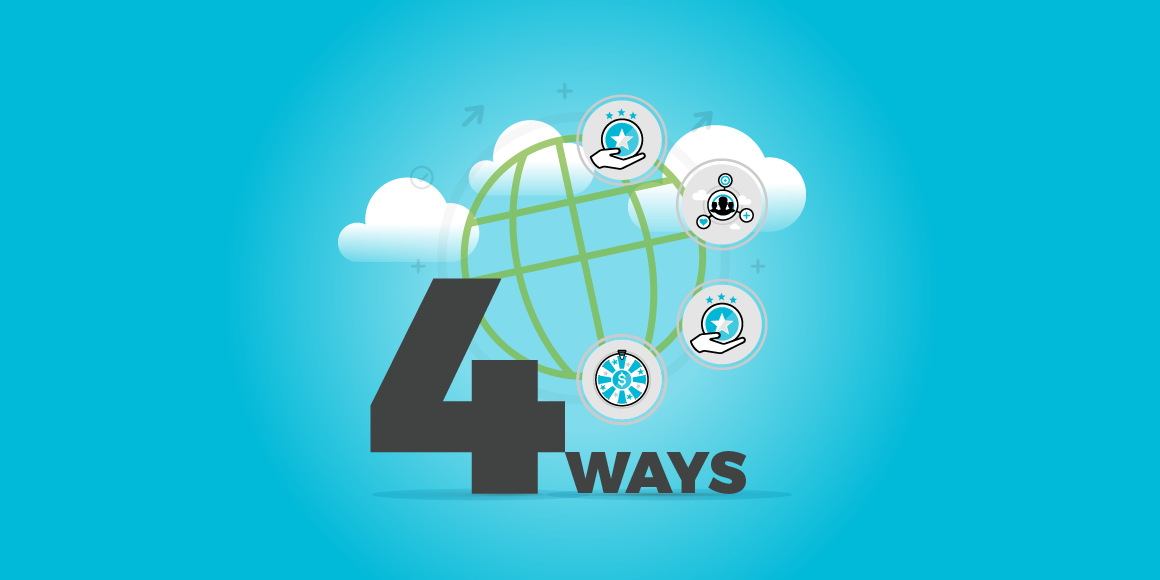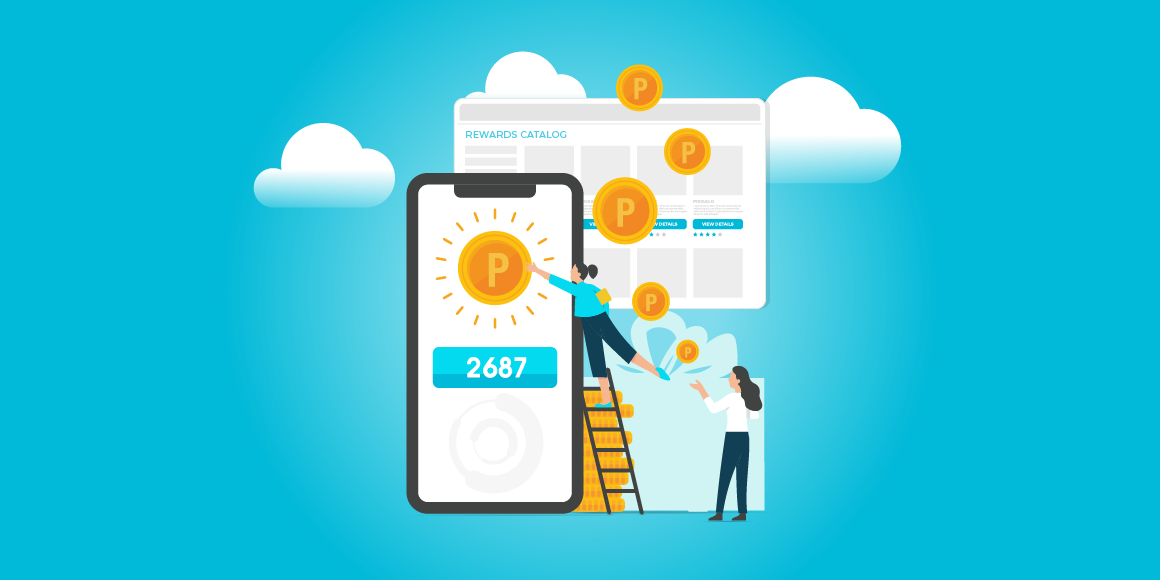To offer cash or gift with purchase, that is the question.
In the world of marketing, incentives and rebate programs play a pivotal role in capturing both customers' attention and market share. Gift with purchase and cash incentives have proven their effectiveness in driving consumer purchases and influencing consumer loyalty and overall customer relationships. These two approaches to customer rebates not only have the power to attract and retain customers but also provide valuable benefits to businesses.
However, understanding benefits, drawbacks, and ideal use cases for each incentive type is crucial when deciding which incentive management strategy to adopt. Here we explore the advantages and disadvantages of gift with purchase and cash incentives to help enable you to make an informed decision and choose the right rebate program for your business.
In this blog, we are covering all you need to know about:
- Gift with purchase
- The benefits
- The drawbacks
- Implementing a successful gift with purchase program
- Cash incentives
- The benefits
- The drawbacks
- Implementing a successful cash incentive program
- Selecting the right market strategy
Let’s dive in!
Gift with Purchase
A gift with purchase incentive is a sales tactic where businesses offer their customer base free gifts when they make a specific purchase. These gifts are often desirable or complementary to the core product(s) being purchased, adding value and enhancing the overall consumer experience.
For example, someone might:
- Purchase a new kitchen range and receive a bonus set of high-quality cookware as a gift.
- Buy a dishwasher and get a complimentary set of dishwasher-safe utensils and dish rack.
- Upgrade their kitchen with a new refrigerator and receive a free countertop blender for creating smoothies and shakes.
The benefits
Who doesn’t love a gift? As is true on birthdays and holidays, receiving a gift from someone is a typically memorable experience and can make that person stand out from a crowd. Plus, the promise of a gift can be attention grabbing and make an otherwise mundane day or event instantly feel special. Gift with purchase incentives can be highly effective if you're offering branded goods or adjacent category items by potentially driving:
- Revenue growth. The allure of receiving a gift encourages customers to make a purchase they may not have otherwise considered. This can result in a boost in sales and revenue for the business.
- Enhanced customer loyalty. Providing a gift with purchase creates a positive experience for customers, improving customer relationships and fostering brand loyalty.
- Competitive advantage. Offering a gift sets your business apart from competitors, making your specific product or service more appealing and attracting new customers.
- Brand visibility. The gift acts as a promotional item, showcasing your brand's logo or name, which increases brand visibility and creates potential for word-of-mouth marketing. This puts less of a burden on your channel partners to market and sell for your products.
- Upselling opportunities. Businesses can strategically offer gifts that complement the main product, encouraging customers to upgrade or purchase additional items, leading to higher average order value.
- Positive perception. Customers perceive the added gift as a bonus, creating a positive association with the brand and reinforcing a favorable image in the customer's mind.
The drawbacks
However, poorly managed gift with purchase incentive programs can cause more damage than good, as effectiveness hinges on proper incentive management and thoughtful design. These types of promotions can be complex to administer, with logistics and customer service management often proving burdensome. Roadblocks can include:
- Increased costs. Providing free gifts can add significant costs to a business, including sourcing, production, and logistics. This can eat into profit margins, especially if the gifts are expensive or of high quality.
- Potential profit loss. While gift with purchase may drive sales, it can also lead to lower profitability if customers solely focus on getting the gift rather than the main product. This can result in reduced revenue from actual product sales.
- Perception of manipulation. Some customers may view gift with purchase promotions as manipulative marketing tactics, causing them to question the authenticity of the offer and potentially eroding trust in the brand.
- Inventory management challenges. Managing inventory for both the main product and the gift can be complex and cumbersome, especially if demand for the promotion exceeds expectations. This can lead to stockouts or delays in fulfilling orders.
- Incompatibility with customer preferences. The gift may not align with every customer's needs or preferences, which could diminish its perceived value. This may result in customers feeling disappointed or less inclined to engage with the promotion.
- Potential brand dilution. If the gift does not meet the same quality standards as the main product, it could negatively impact the brand's reputation. Customers may associate the gift's quality with the overall quality of the brand, potentially tarnishing its image.
Implementing a successful gift with purchase program
Implementing a gift with purchase program can be an effective marketing strategy, but it comes with its fair share of challenges. Businesses need to navigate these hurdles to ensure successful program performance. Look out for roadblocks related to:
- Logistics: Fulfillment and distribution can be challenging. It's essential to have a system in place for shipping and handling.
- Customer Service: Support management can be demanding. Be prepared for queries like "When will it arrive?" or "It came broken."
- Consumer Value: In today's market, consumers seek value. The gift must be desirable or complementary to the core product(s) being purchased. Alternatively, a cash discount or short-term cashback rebate programs could be more appealing.
- Inventory Management: Ensure you have enough stock to fulfill the demand and avoid delays.
- Relevance: Choose gifts that are category or brand-adjacent, making sense to the consumer.
By recognizing and addressing these challenges, businesses can maximize the potential benefits of a gift with purchase program and create a positive customer experience that drives sales and loyalty.
Cash Incentives
A cash incentive or cash rebate refers to a monetary reward or discount. It's offered to customers as an incentive to purchase durable goods such as appliances, electronics, or furniture. This type of incentive provides customers with immediate savings or cashback upon making a qualifying purchase. This encourages them to choose a specific product or brand.
The benefits
We’ve all been there. You’ve been searching for the perfect gift to no avail and have decided to go with cold hard cash. While not as personal, cash is a one-size fits all offering that appeals to the widest array of recipients. That’s why cash incentive or customer rebate programs can be a powerful tool for businesses to drive sales, attract customers, and improve relationships with channel partners. By offering a monetary reward or discount, businesses can create a compelling incentive that motivates consumers to make a purchase. Some of the benefits include:
- Flexibility and Choice: Unlike other types of incentives, such as gift cards or specific products, a cash incentive offers customers the freedom to use the money as they wish. This flexibility allows customers to choose products or services that best align with their preferences and needs, enhancing customer success, satisfaction and engagement.
- Universal Appeal: Cash incentives have a universal appeal as they provide value to customers across various demographics and preferences. Regardless of age, gender, or interests, everyone appreciates saving money. This broad appeal makes cash incentives an effective strategy to attract a wide range of customers.
- Easy Implementation: Implementing a cash incentive or vendor rebates program is relatively straightforward compared to other promotional strategies. It involves providing customers with a predetermined cash amount or percentage discount, simplifying the process for both businesses and customers.
- Positive Brand Perception: Offering a cash incentive sends a positive message to customers, showcasing a business's commitment to providing value and rewards. This can enhance brand perception, foster loyalty, and encourage repeat purchases.
The drawbacks
Cash incentives can be effective in driving sales and growing market share. But it's important to consider the potential drawbacks that come with implementing such programs. Let's explore some of the key drawbacks of offering cash incentives:
- Reduced Perceived Value: Compared to tangible rewards or exclusive experiences, cash incentives may be perceived as less valuable by customers. The lack of a physical or experiential element could diminish the overall appeal and impact of the incentive, potentially reducing customer motivation.
- Lower Brand Differentiation: Cash incentives are often seen as generic and can fail to differentiate a brand from its competitors. Since many businesses use cash incentives as a universal reward, customers may not associate the incentive directly with the brand, limiting its ability to create a unique and memorable experience.
- Potential Profit Margin Impact: Offering cash incentives directly affects a business's profit margins. Providing monetary rewards or discounts can eat into profitability, especially if the incentive is significant or used frequently. Careful consideration must be given to ensure that the cost of the incentive does not outweigh the anticipated benefits in terms of increased sales or customer loyalty.
- Limited Targeting: Cash incentives may not effectively target specific customer segments or demographics. Unlike rewards tailored to specific interests or preferences, cash incentives appeal broadly and may not resonate strongly with niche markets or specific customer groups. This lack of targeting could result in lower engagement and conversion rates.
- Lack of Emotional Connection: Cash incentives often lack the emotional connection that other types of incentives can create. Tangible rewards or experiences can evoke positive emotions and strengthen the bond between customers and a brand. Cash incentives, on the other hand, may be seen as a transactional benefit, potentially missing the opportunity to foster deeper customer loyalty.
Implementing a successful cash incentive program
Implementing a cash incentive or rebate program can be a highly effective strategy to drive sales, grow market share, and boost customer loyalty. However, to optimize program performance, businesses need to consider several key elements:
- Minimal Submission Effort: Design the cash incentive or rebate program to require minimal effort from participants when submitting their claims. Simplify the rebate management process by providing user-friendly platforms, clear instructions, and automated systems. These will help streamline claims and rebate processing and reduce barriers to participation. This will enhance customer satisfaction.
- Short Time to Receive: Ensure a quick turnaround time for participants to receive their cash incentives or rebate payments. Implement efficient processes for validating and processing claims to minimize delays. Promptly fulfill the incentives to maintain customer satisfaction and reinforce the positive experience associated with the program.
- Proportional Cashback Value: Offer cashback values that are proportional to the customers' investment or spending. This means providing higher cashback percentages or amounts for larger purchases or higher levels of engagement. Align rebate payments with the customers' investment to enhance the perceived value and encourage greater participation.
- Clear Communication of Cashback Structure: Clearly communicate the structure and calculation method for cashback rewards to participants. Transparency about how the cashback value is determined increases trust and confidence in the program. Clearly outline the parameters and any limitations or restrictions to avoid confusion or dissatisfaction among participants.
- Regular Program Evaluations: Continuously evaluate the effectiveness of the cash incentive program to ensure it remains aligned with business goals, sales targets, and customer expectations. This can be done through strong data collection and rebate processing. Gather feedback from participants, track key metrics, and analyze customer data to identify areas for improvement. Adapt the program based on insights gained to optimize its success and maintain relevance over time.
By considering these key elements, businesses can implement a successful cash incentive program that drives sales, increases customer engagement, and enhances brand loyalty. Remember to continuously evolve and refine the program to ensure its continued effectiveness in a dynamic marketplace.
Selecting the Right Strategy
Both gift with purchase and cash incentives share some common factors. They're both forms of rebate management solutions that tap into customers' motivation for added value and rewards, making them powerful tools to boost customer engagement and increase sales. Both strategies have the potential to enhance customer perception of a brand. Whether through receiving a free gift or obtaining cashback, these incentives foster a positive customer experience, which can ultimately strengthen customer loyalty.
Finally, both gift with purchase and cash incentive programs provide opportunities for effective marketing campaigns. Businesses can leverage these programs to generate excitement, attract new customers, and retain existing ones. What's more, they can improve alignment with channel partners.
However, gift with purchase and cash incentives also differ in several significant ways. The nature of the incentives sets them apart; Gift with purchase offers customers a tangible item, such as a product sample or exclusive merchandise, while cash incentives provide customers with monetary rewards, either through direct cashback or store credits. The perceived value of the incentives varies. Gift with purchase emphasizes the perceived value of the free item, creating a psychological incentive for customers.
On the other hand, cash incentives and rebate programs offer a more straightforward monetary benefit that customers can use as they see fit. Lastly, cash incentives provide customers with flexibility and personalization options. They can choose how to use the rewards, giving them the freedom to select products or services that align with their preferences. Gift with purchase may be more limited in terms of options and personalization.
The right incentive at the right time
The impact of gift with purchase and cash incentives can vary depending on when and how they are used. Choosing the right incentive type for your use case is crucial to maximize its effectiveness. Factors such as the timing, target audience, objectives, and desired outcomes should be considered when selecting between gift with purchase and cash incentives, ensuring that your chosen strategy aligns with your specific use case and business goals.
Consider a gift with purchase incentive for:
- Product Launches: When introducing a new product or line, offering a complimentary gift with purchase can generate excitement and incentivize customers to try the new offering. This allows businesses to showcase the value and features of the new product while also increasing sales.
- Brand Awareness: Gift with purchase can be particularly effective in building brand awareness and attracting new customers. By providing a free item that aligns with the brand's image and values, businesses can create a positive first impression and encourage potential customers to engage with their products or services.
- Upselling and Cross-Selling: Gift with purchase can be used strategically to encourage customers to spend more or try different product categories. For example, offering a free accessory or sample for reaching a certain purchase threshold motivates customers to explore additional offerings, potentially increasing their overall spend.
Consider a cash purchase incentive for:
- High-Value Purchases: Cash incentives are well-suited for high-value purchases as they provide customers with a tangible monetary benefit that is proportional to their investment. This can help alleviate any doubts or concerns customers may have when making significant buying decisions.
- Repeat Purchases and Loyalty Programs: Cash incentives can be an effective tool for rewarding customer loyalty and encouraging repeat purchases. By offering cashback rewards or store credits based on cumulative spending, businesses can foster long-term relationships with their customers and increase customer retention.
- Flexibility and Personalization: Cash incentives provide customers with the freedom to choose how they want to utilize the rewards. This works well in situations where customers have diverse preferences or varying needs, allowing them to apply the cashback towards their preferred products or services.
Conclusion
When selecting between gift with purchase and cash incentives, it's crucial to consider specific business objectives, target audience, sales strategies, and desired outcomes. By analyzing relevant use cases, you can make an informed decision and determine which rebate management solution will be more suitable for your circumstances.
However, it is equally important to ensure that the chosen approach aligns with your business objectives and value proposition, adds value to the consumer's experience, and is manageable within your operational capacity. By carefully evaluating these factors, you can implement an incentive program that effectively drives customer engagement and contributes to the success of your business.






